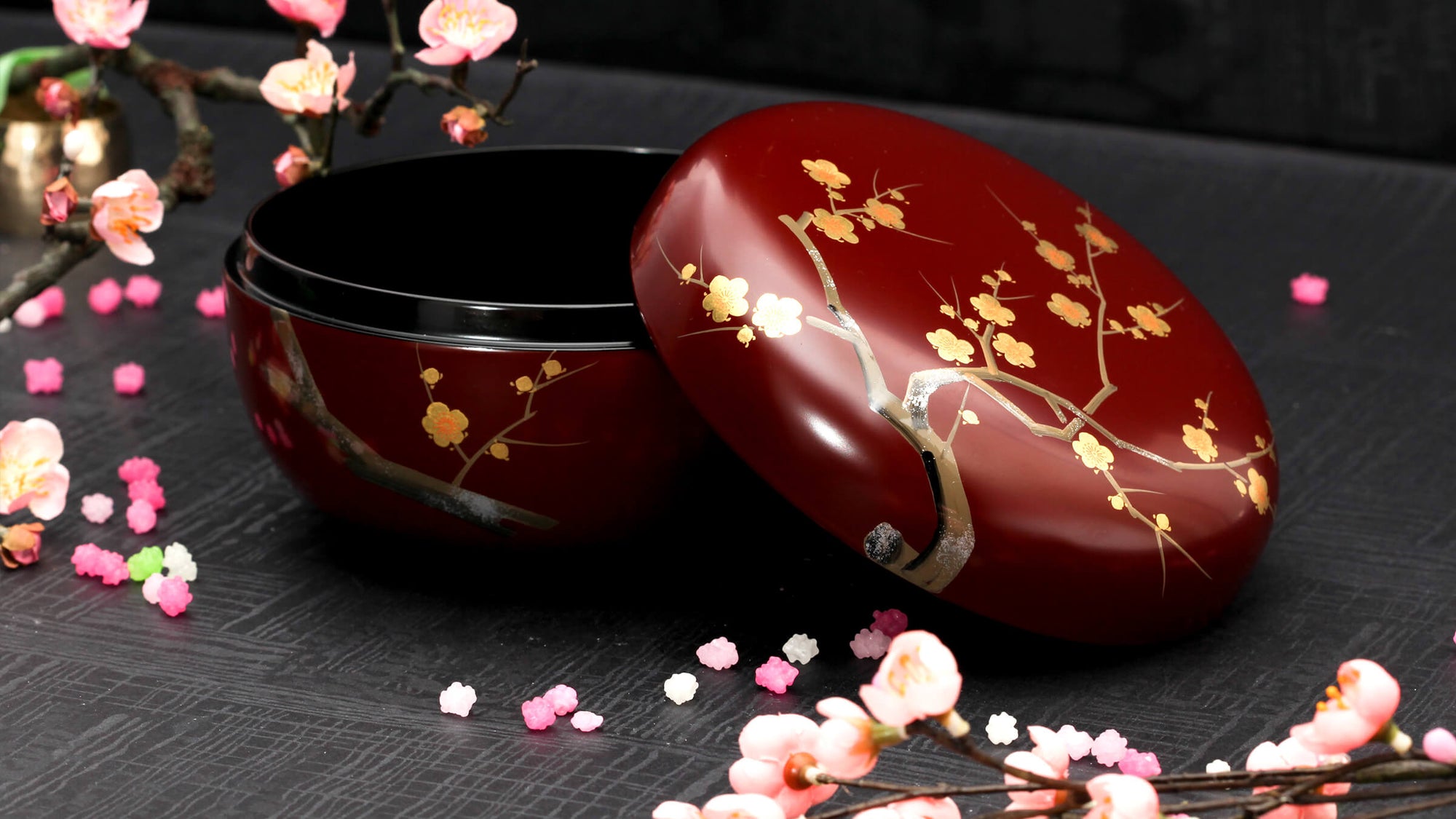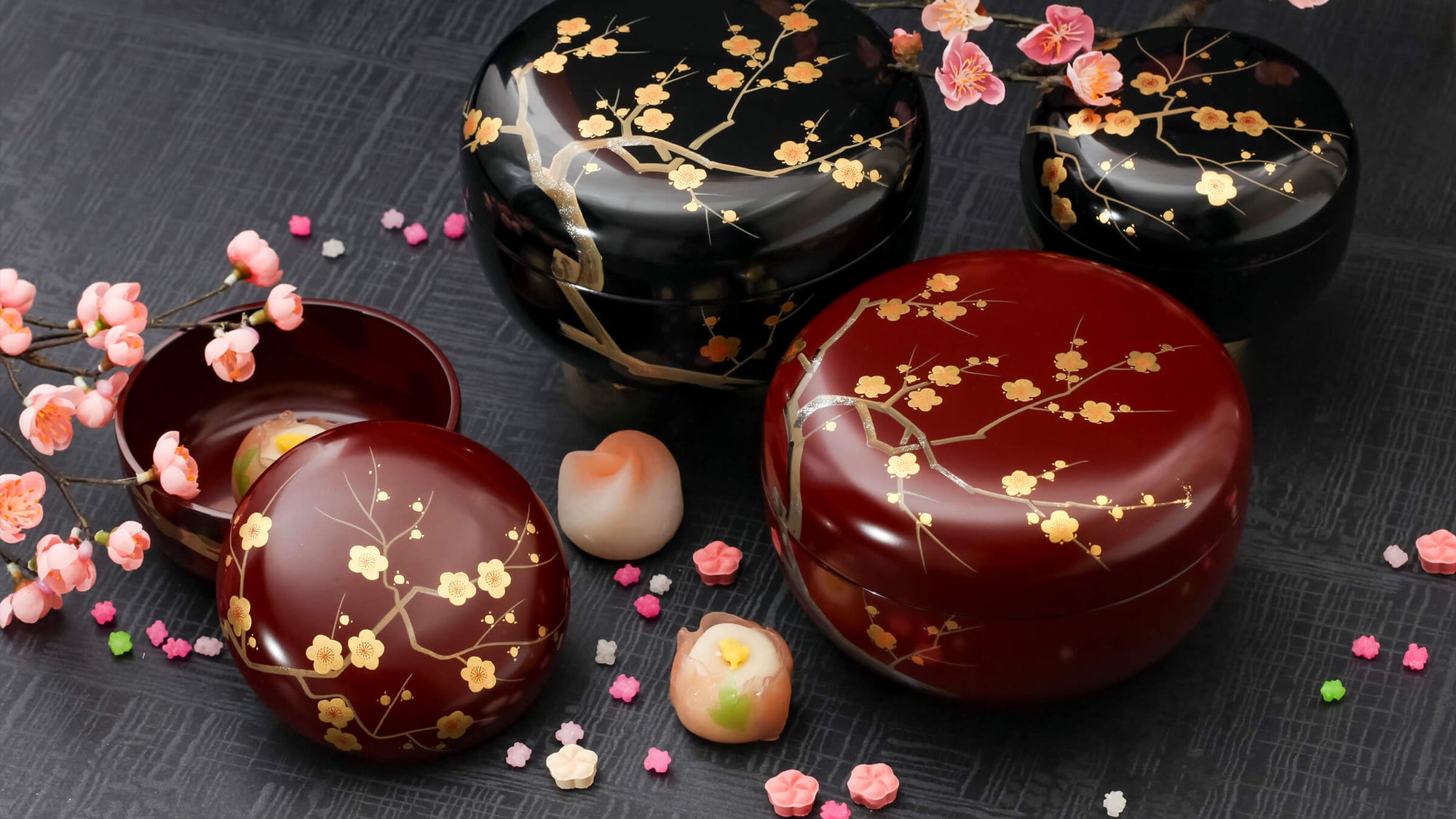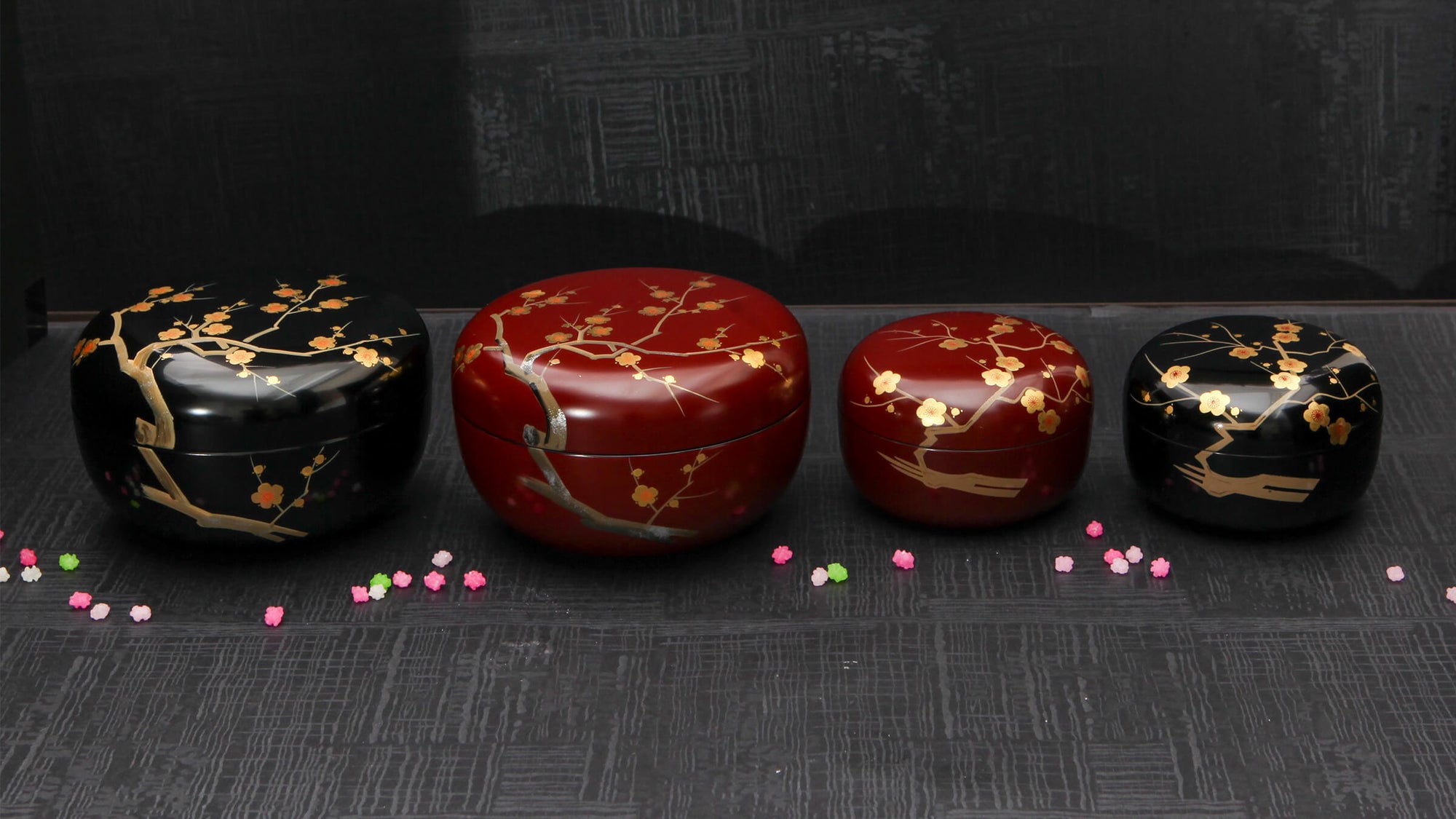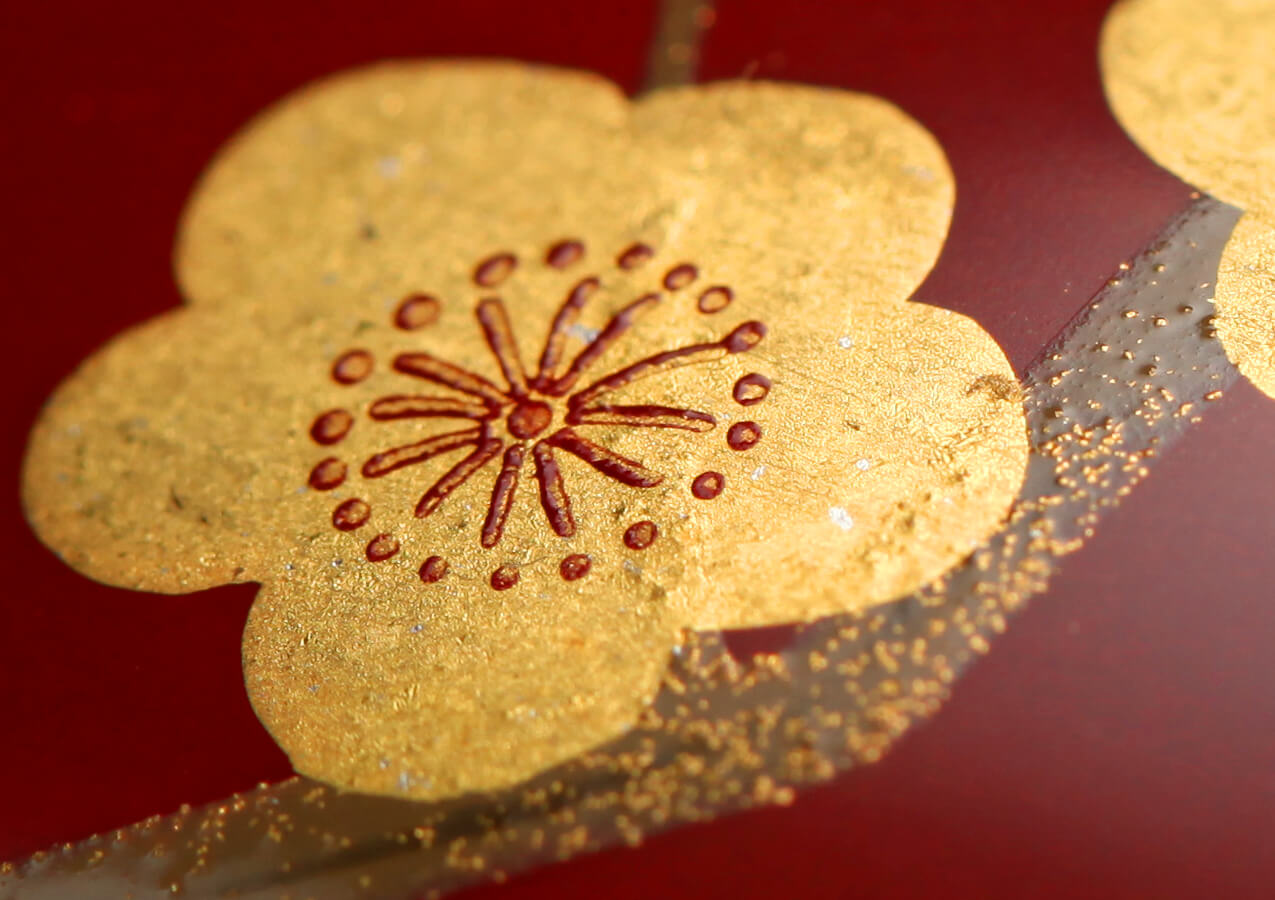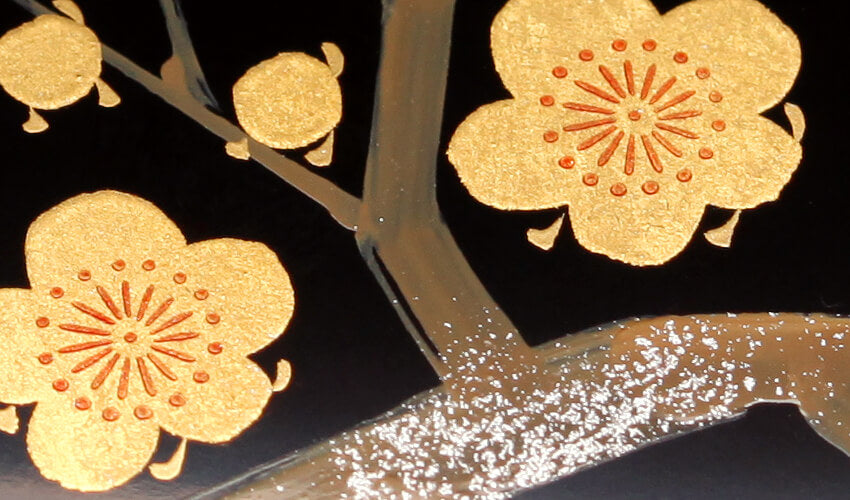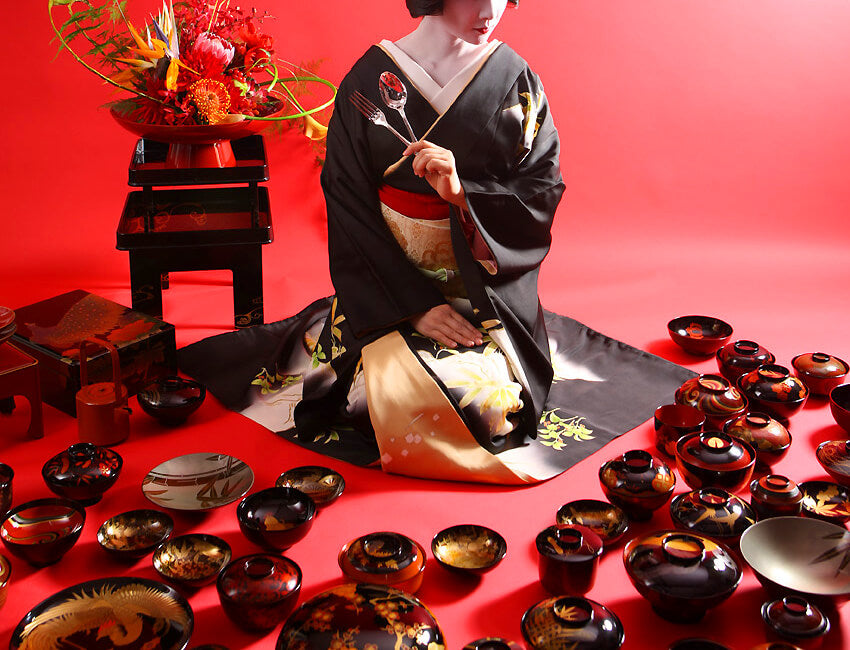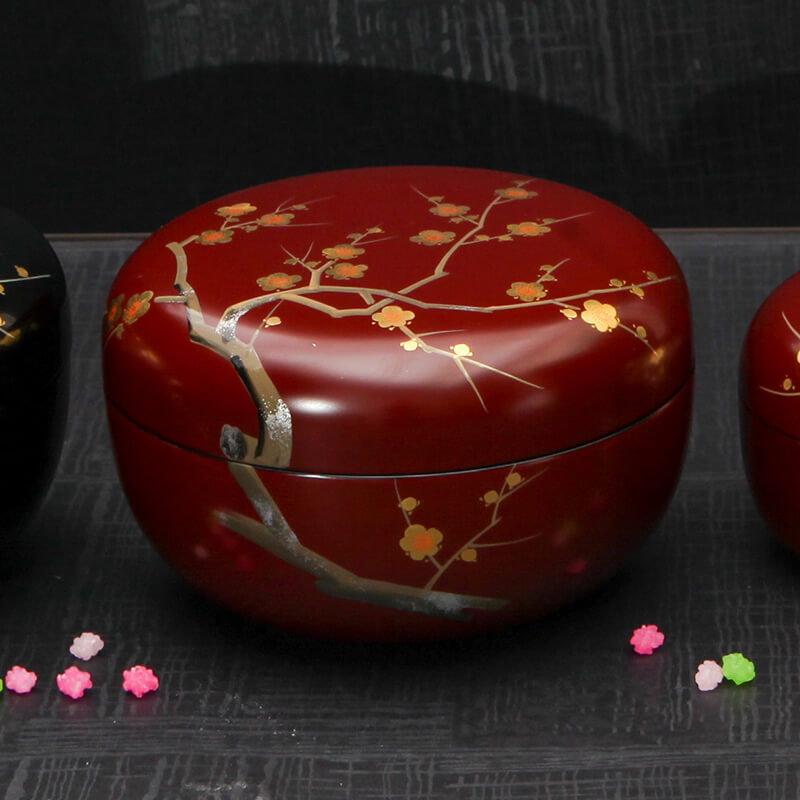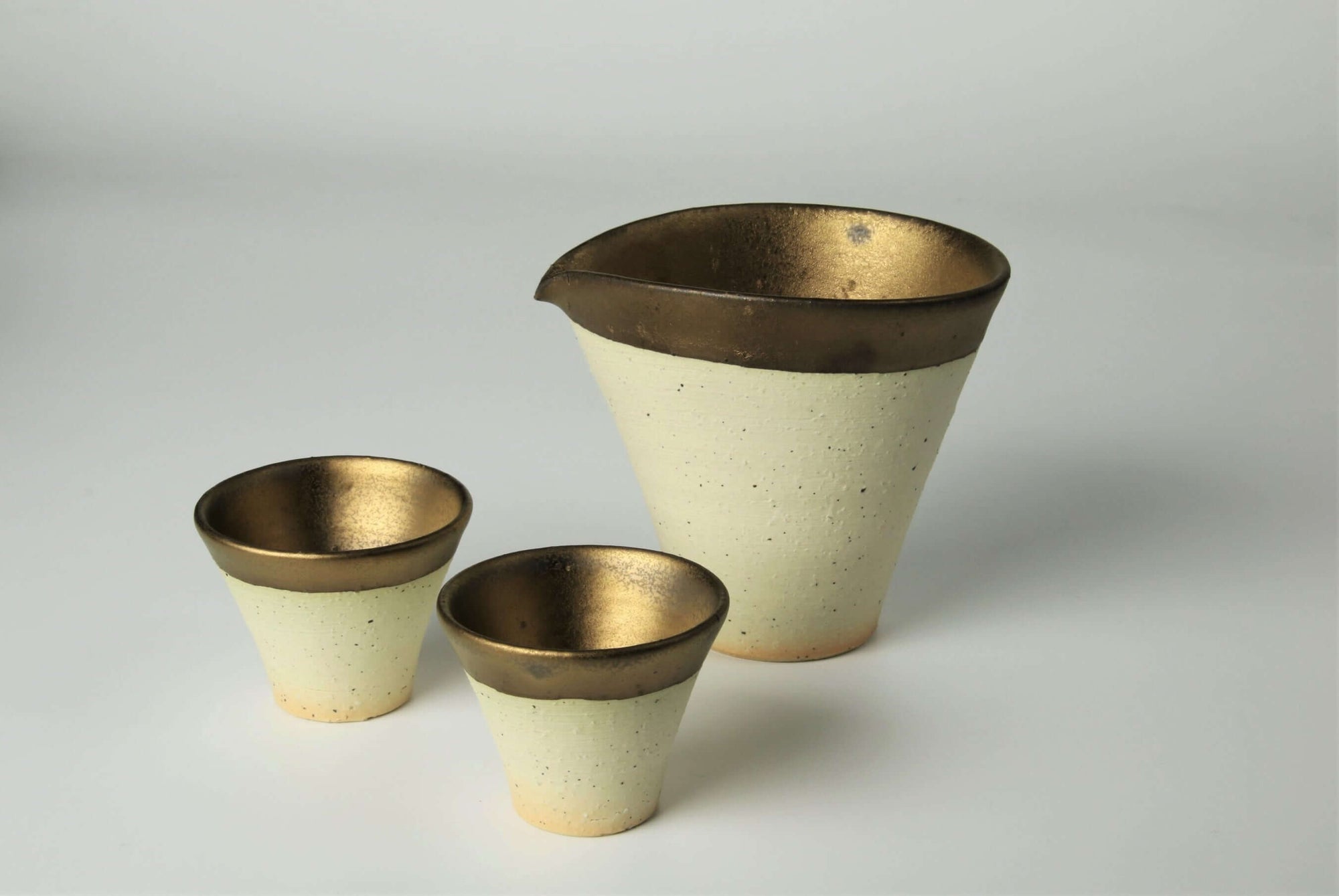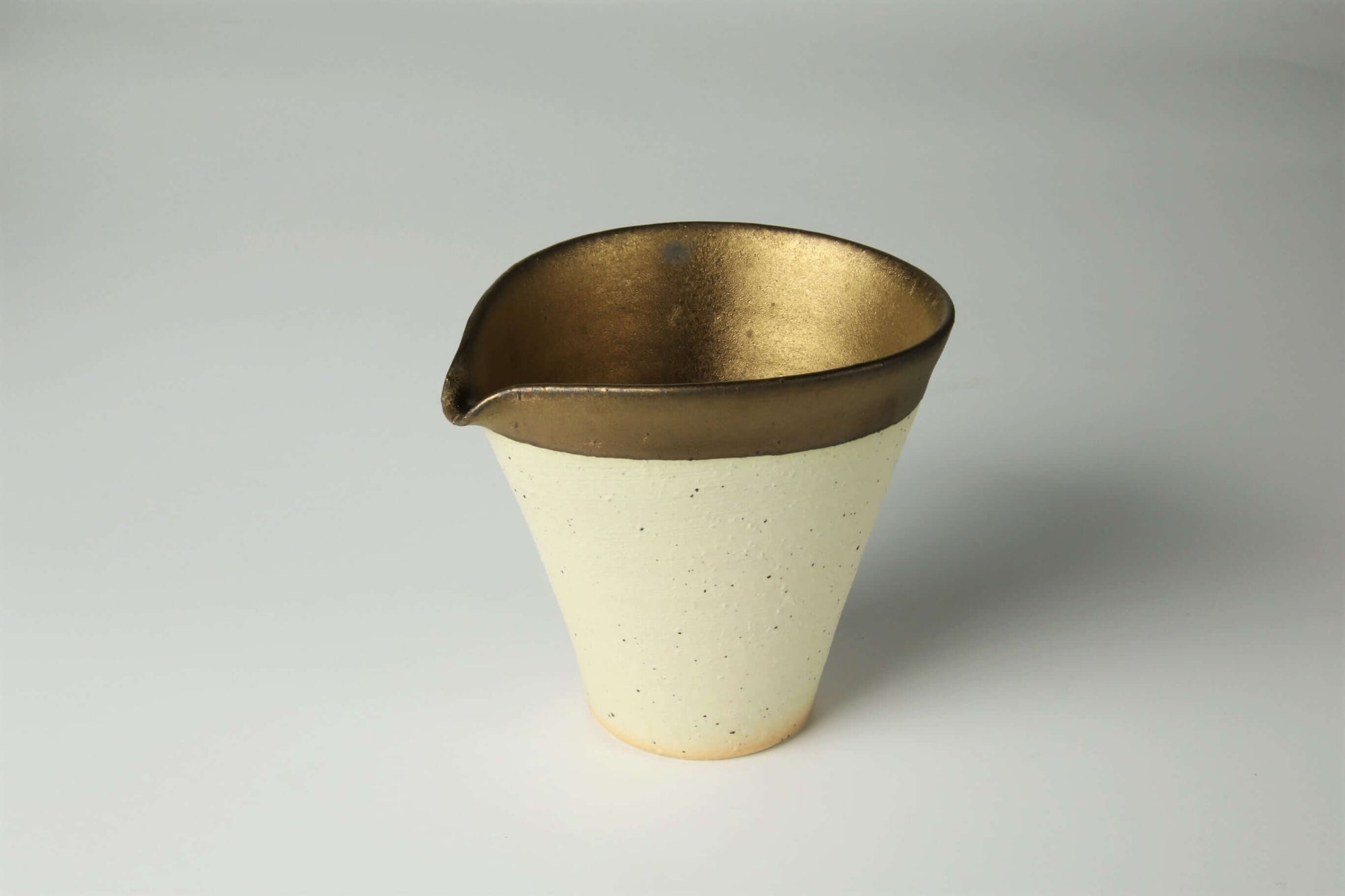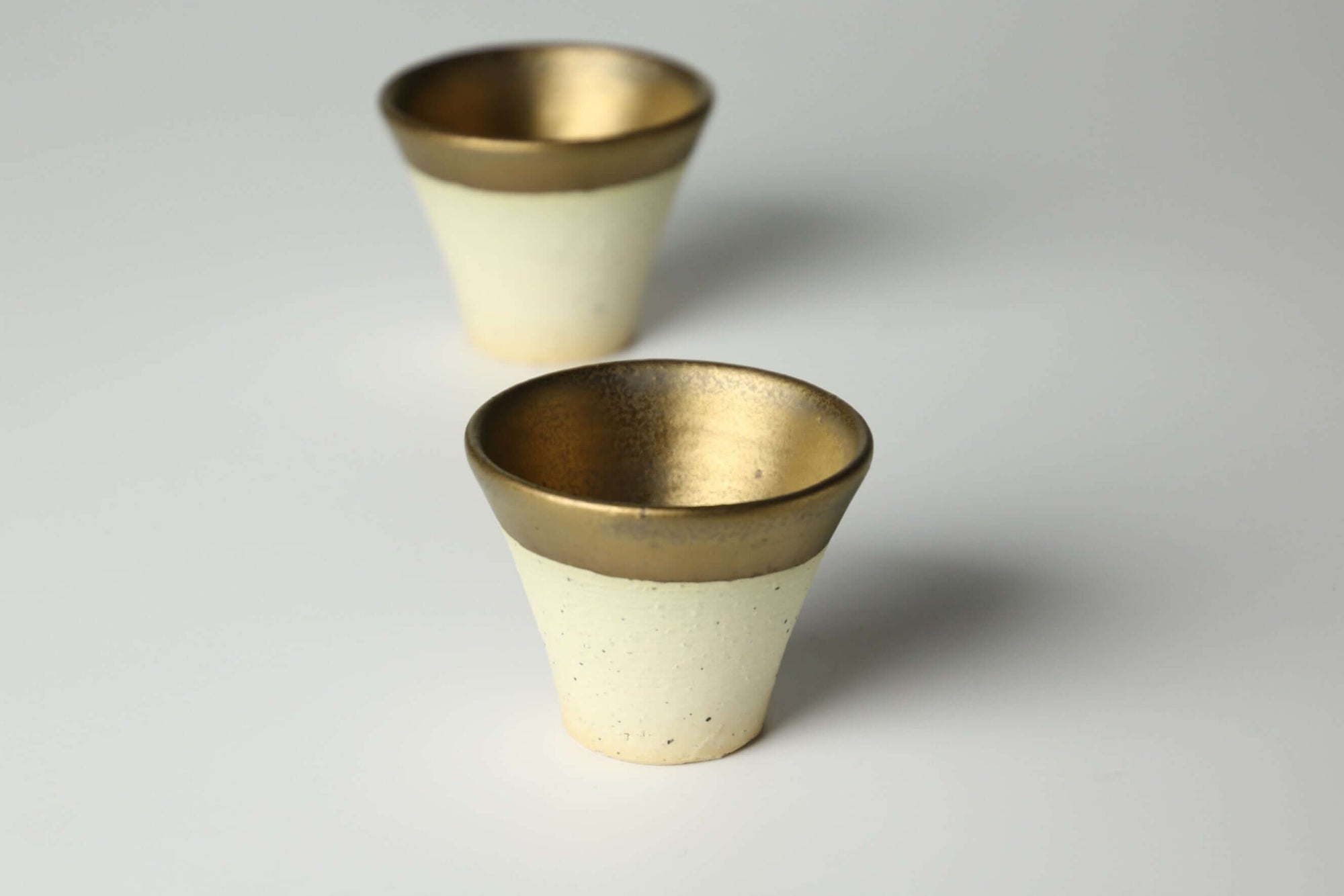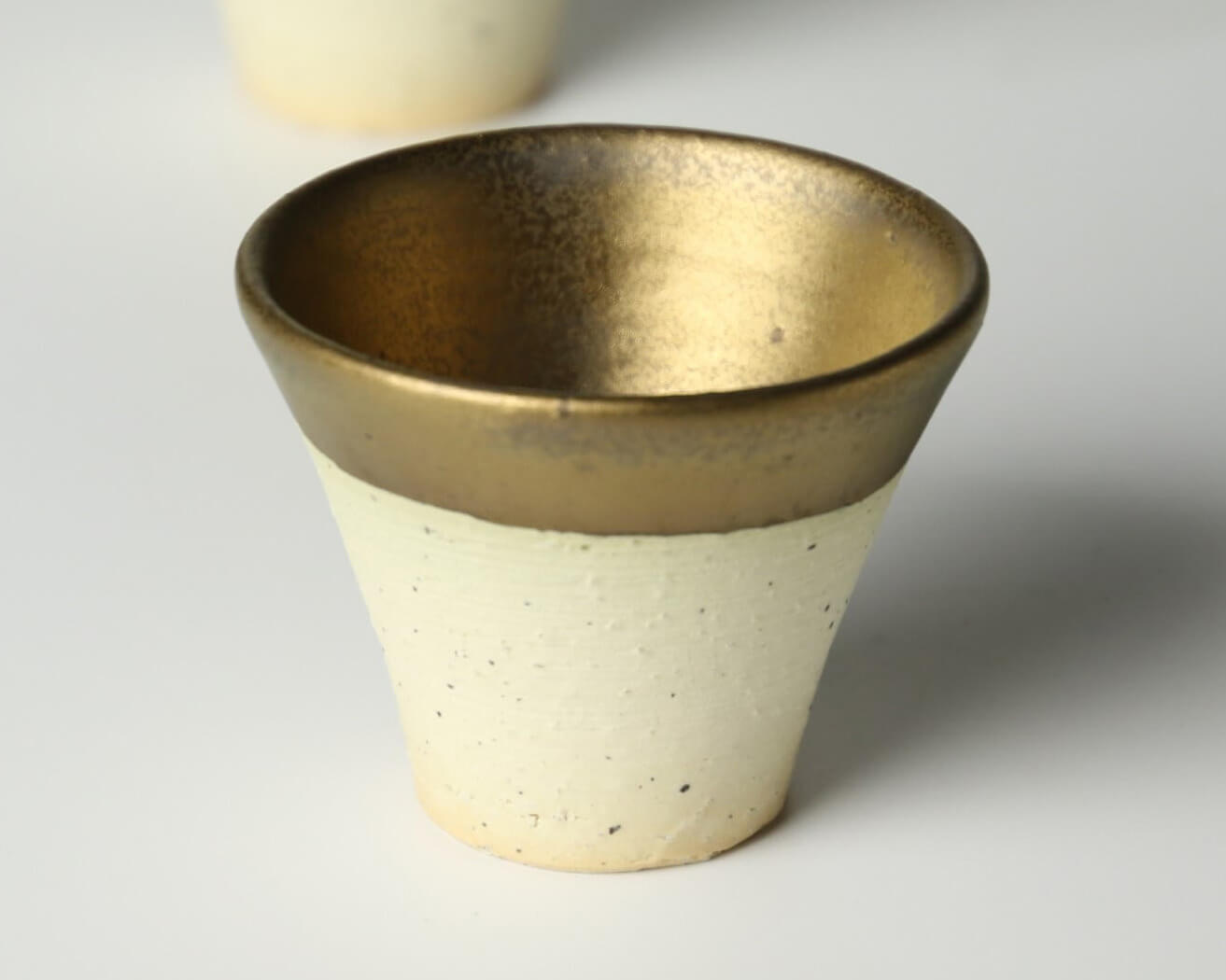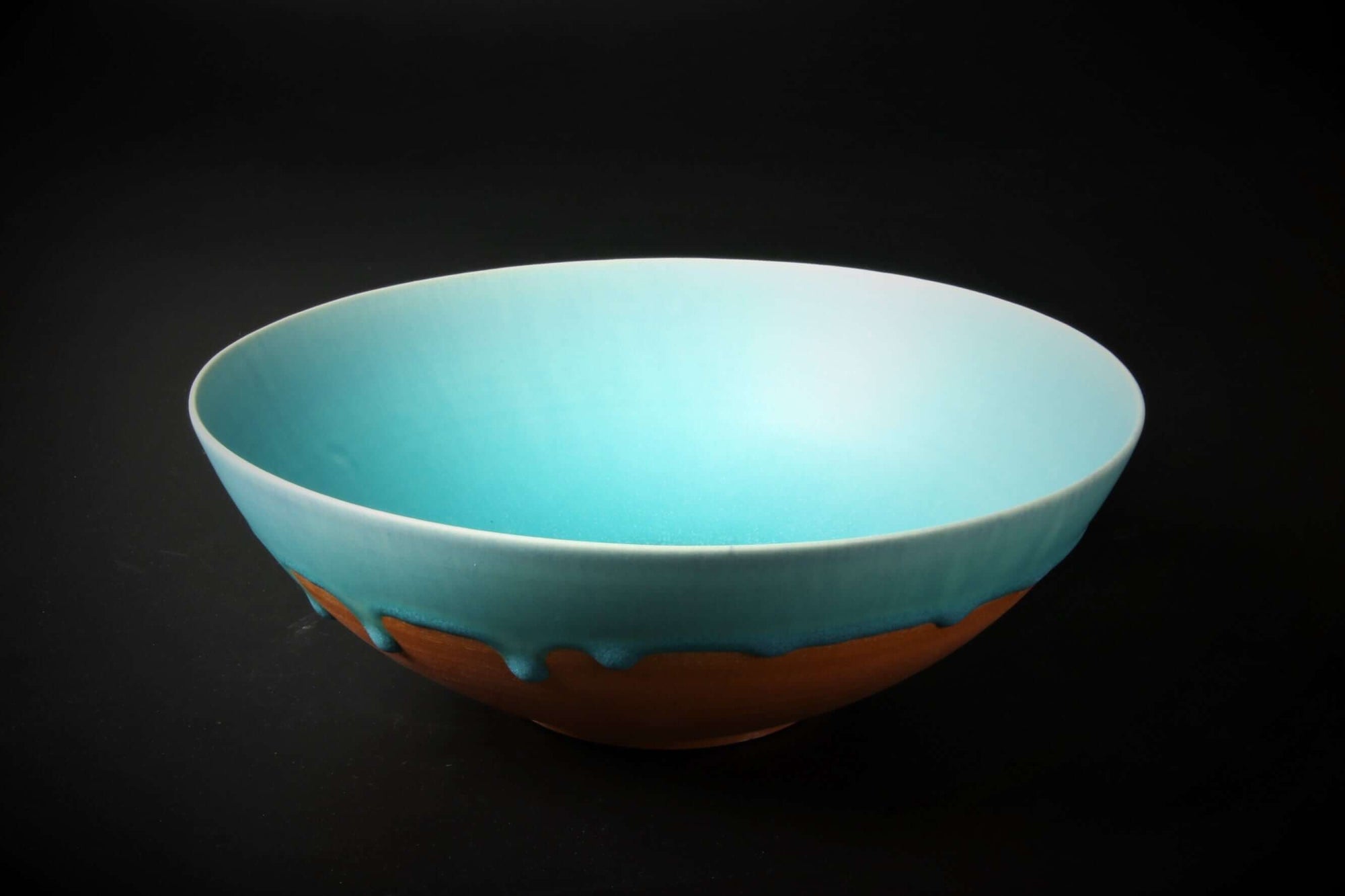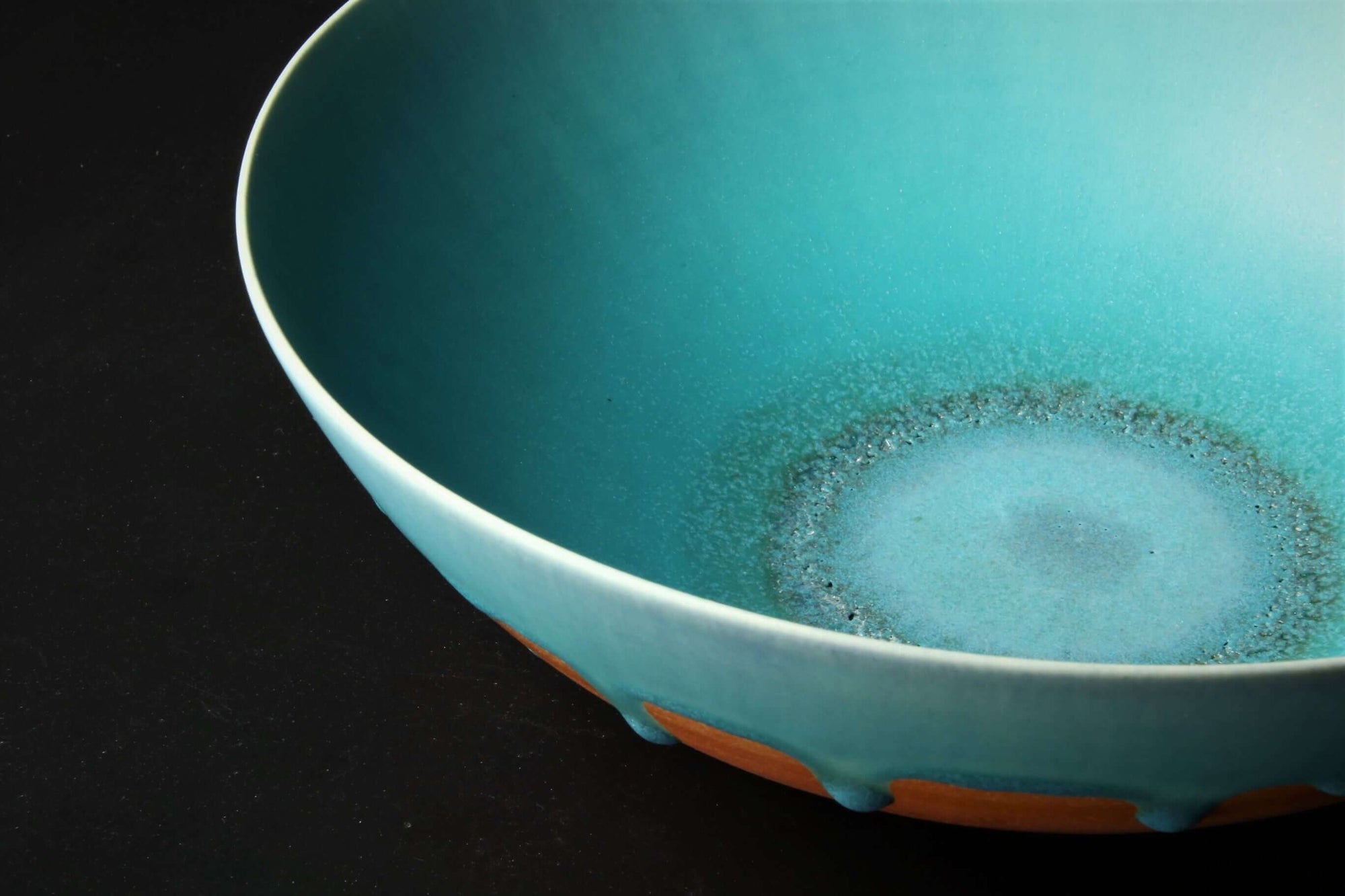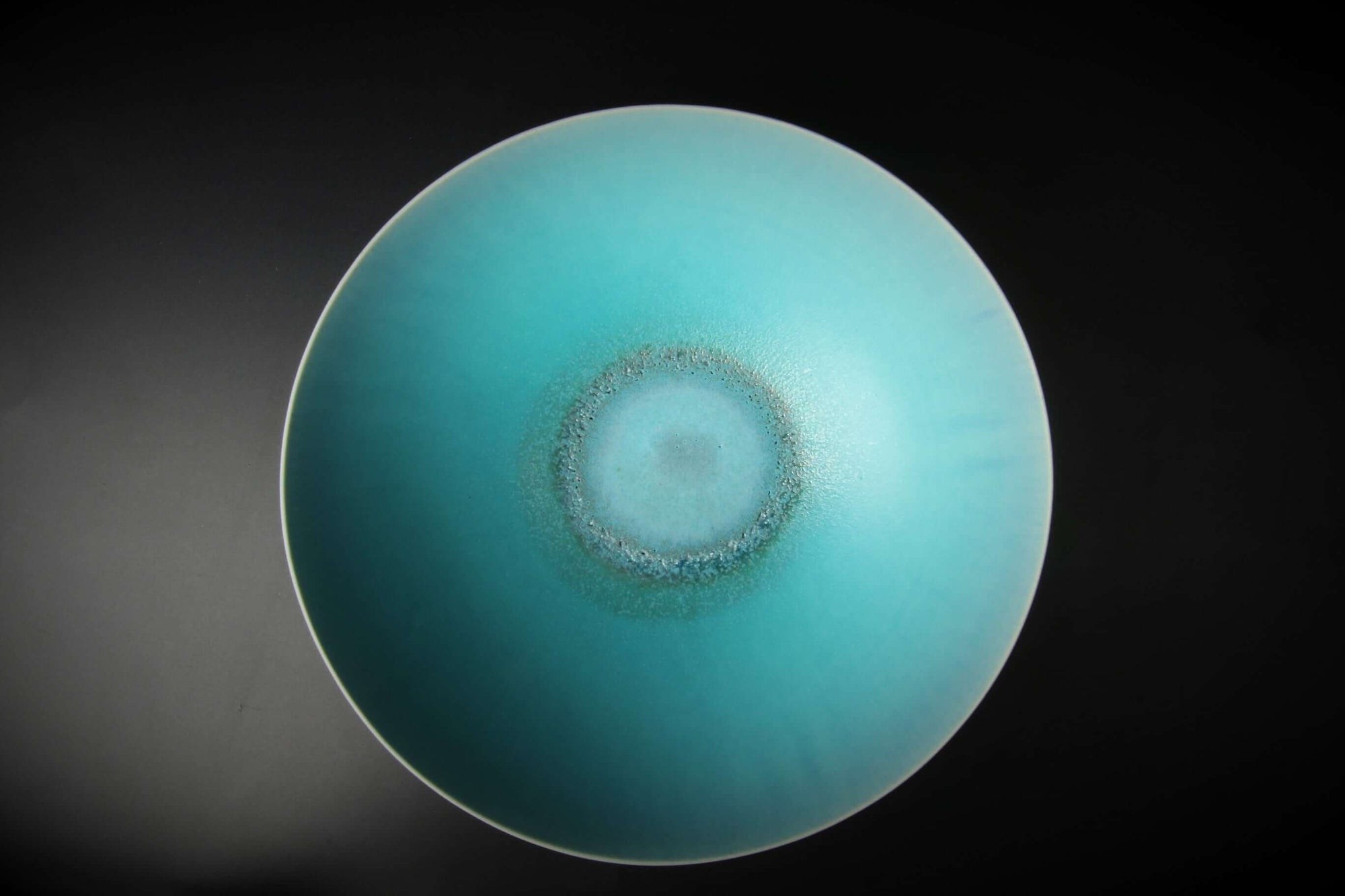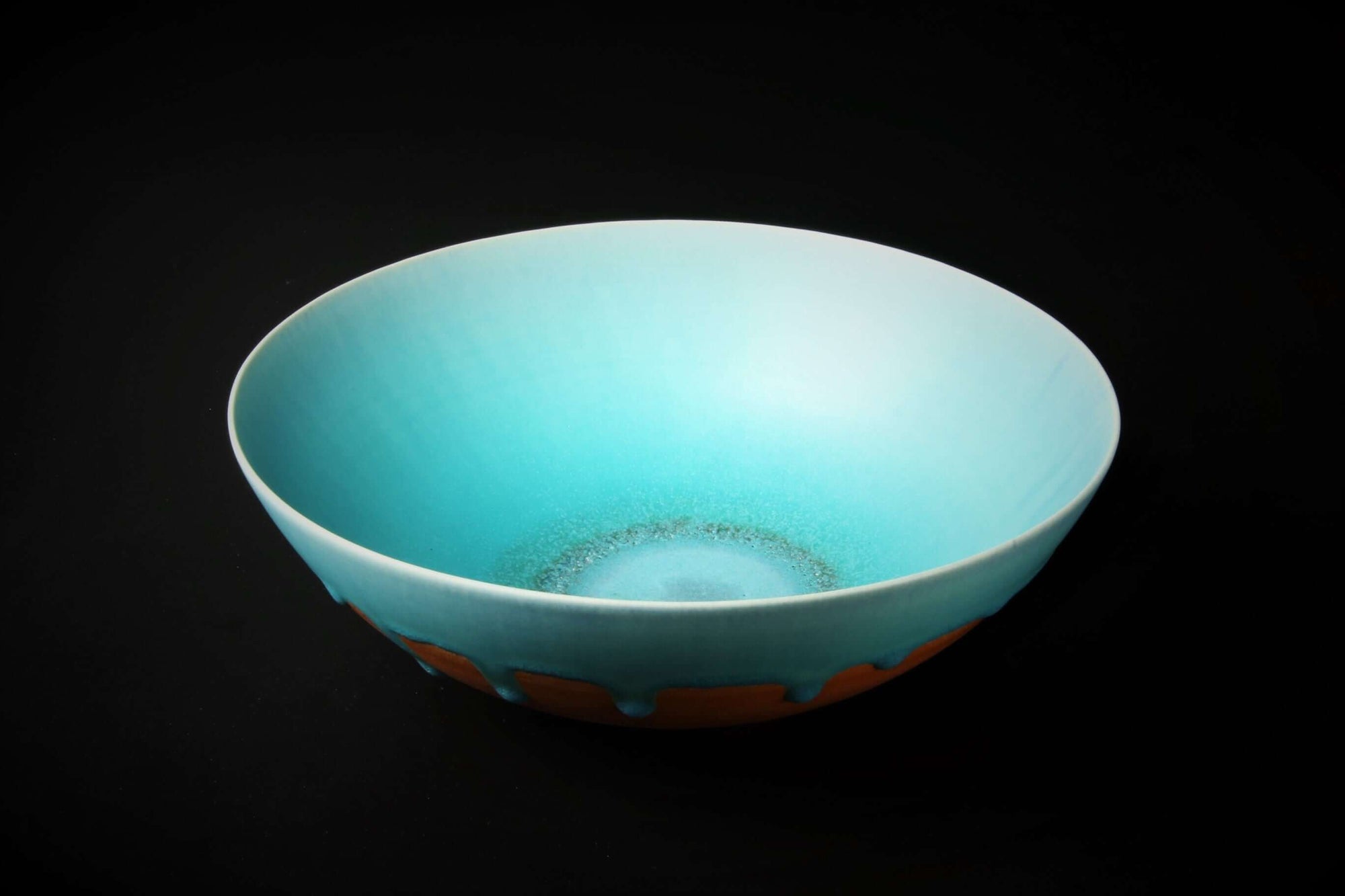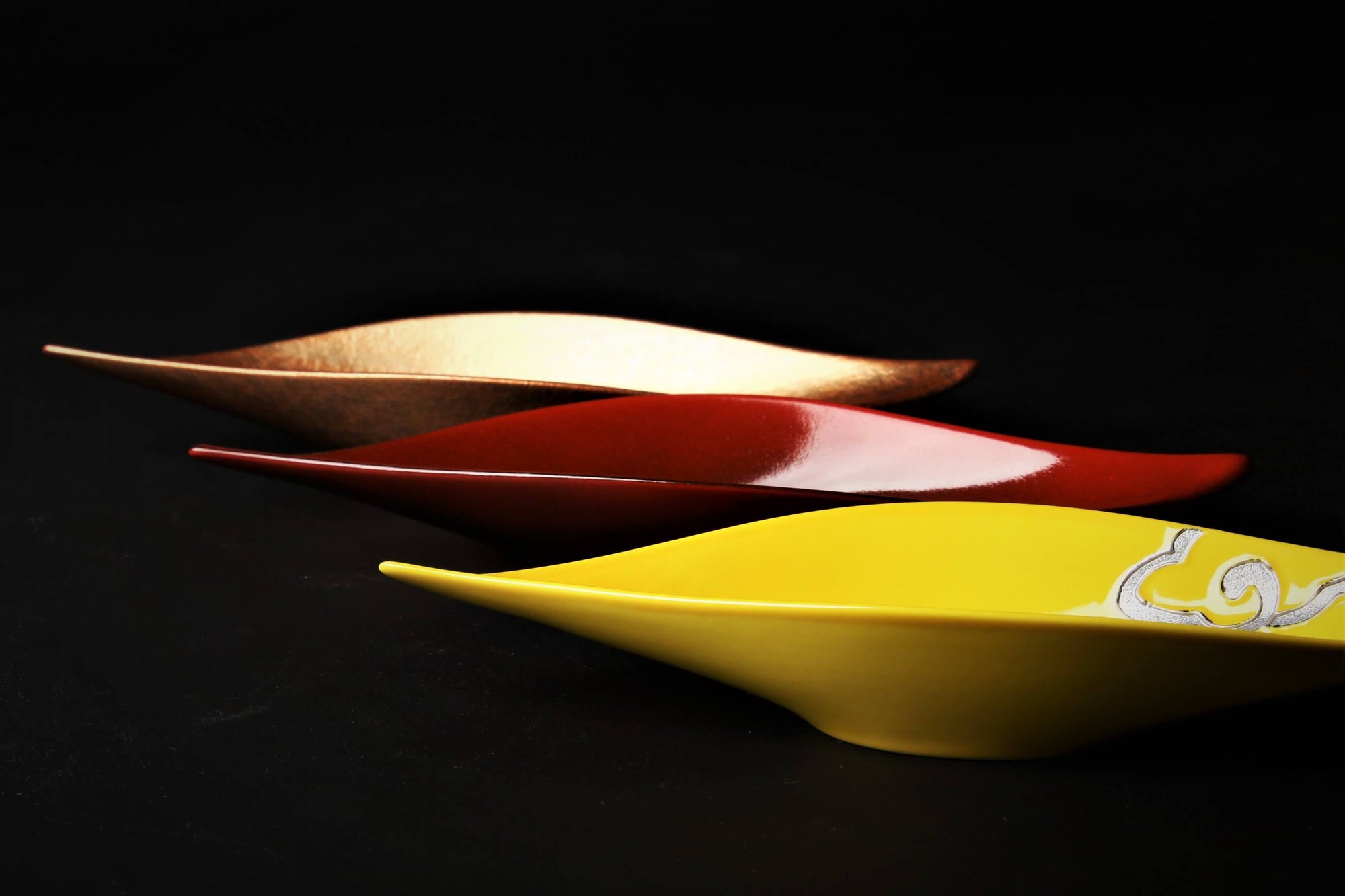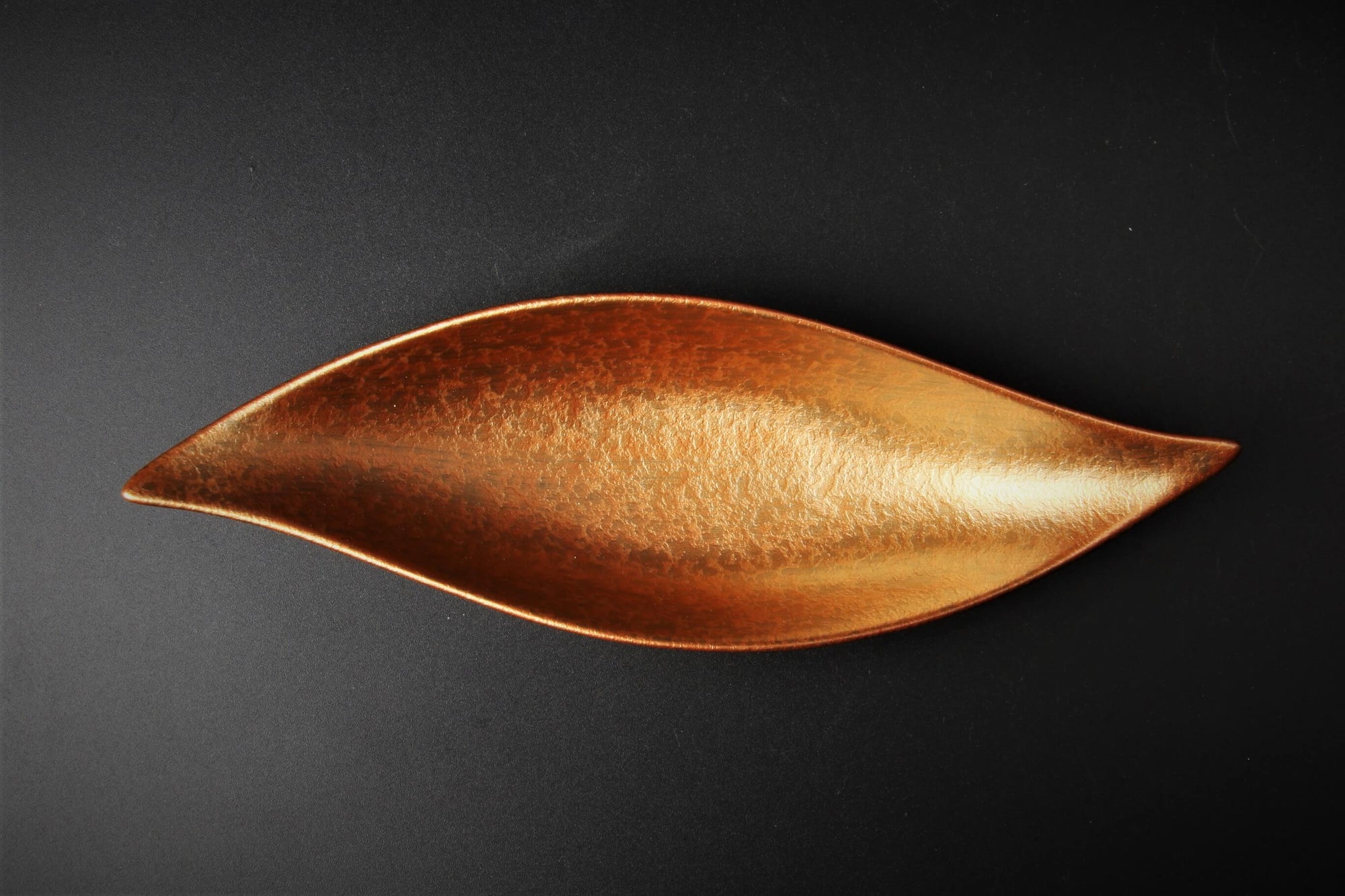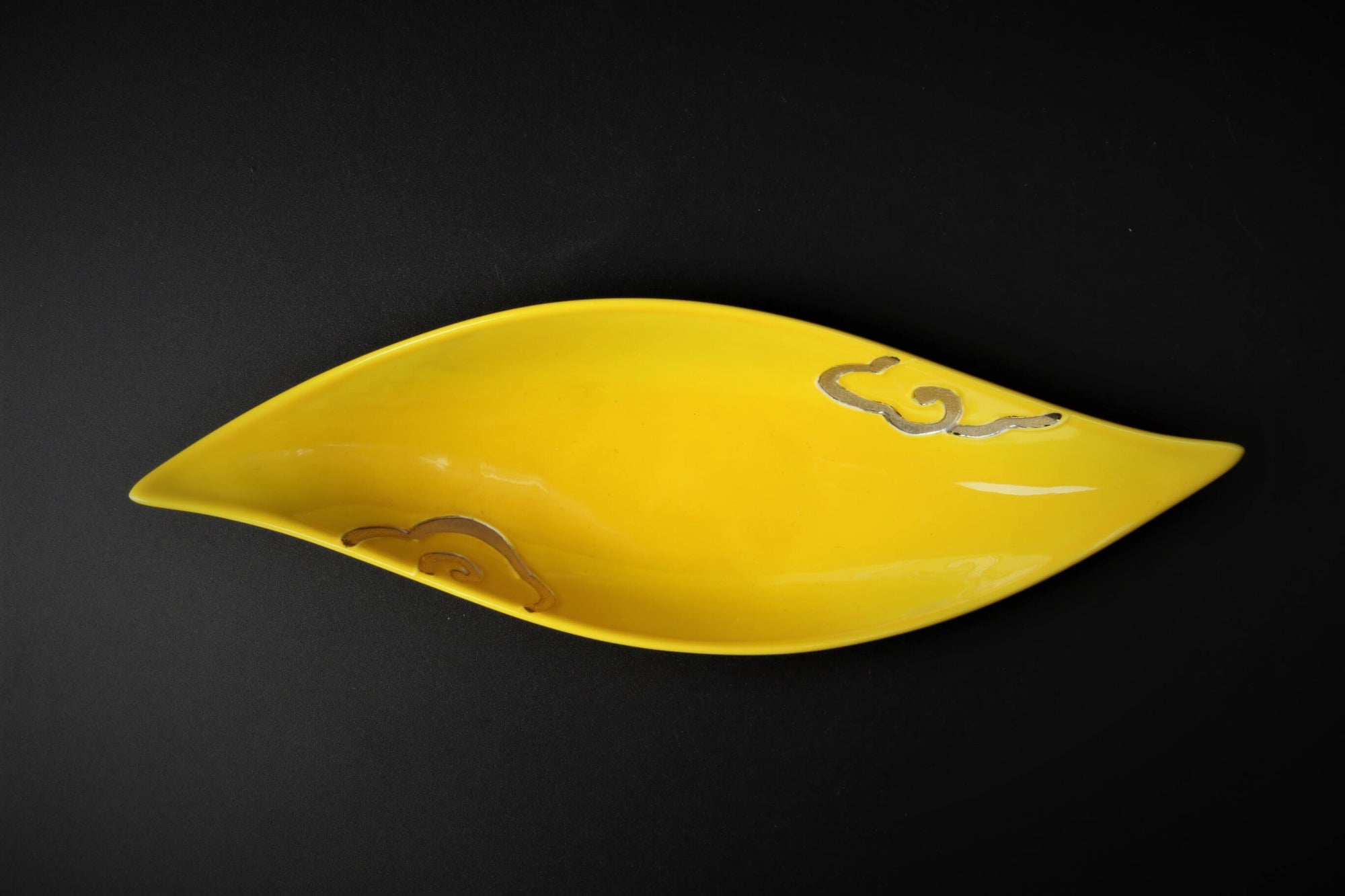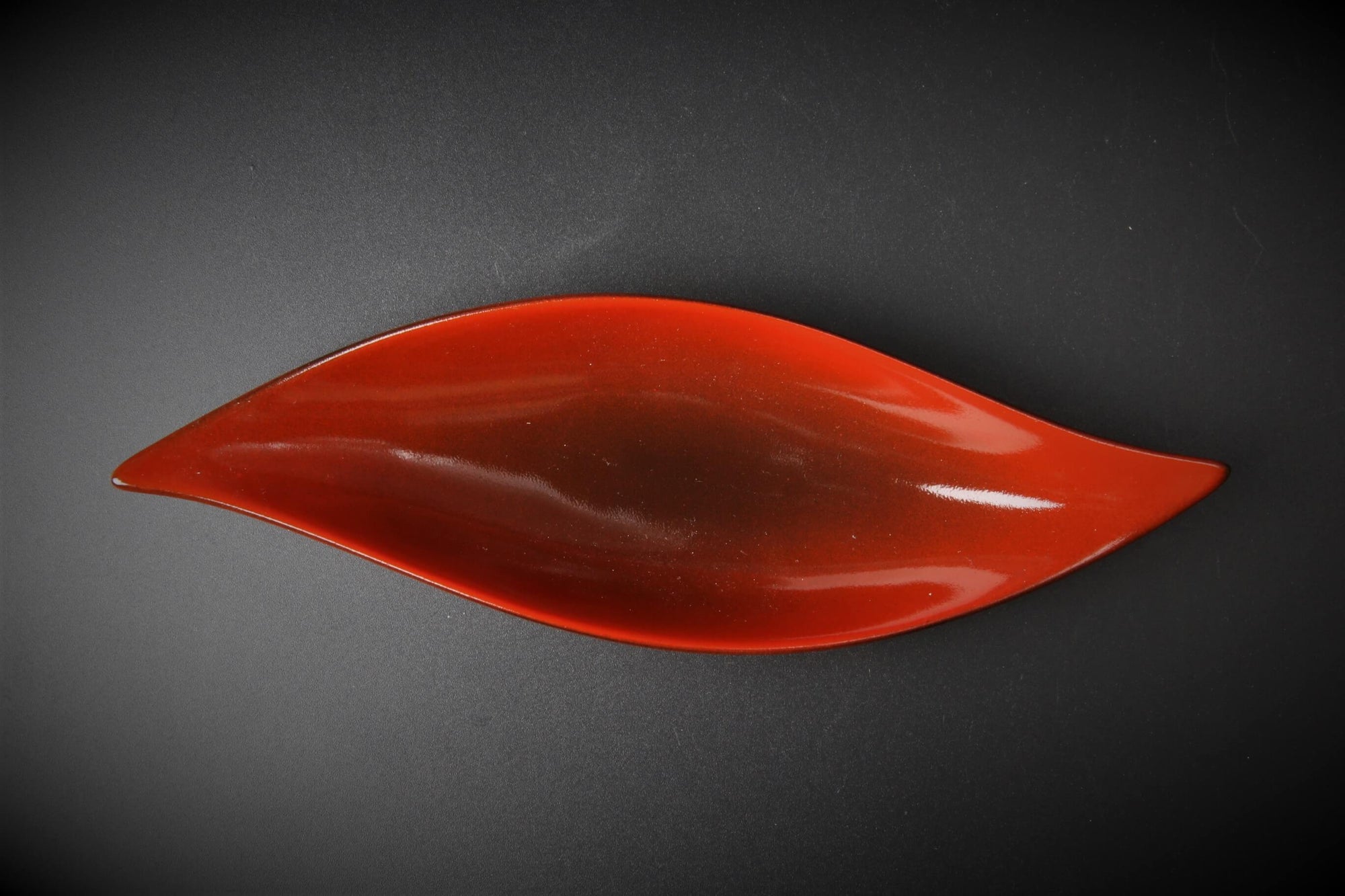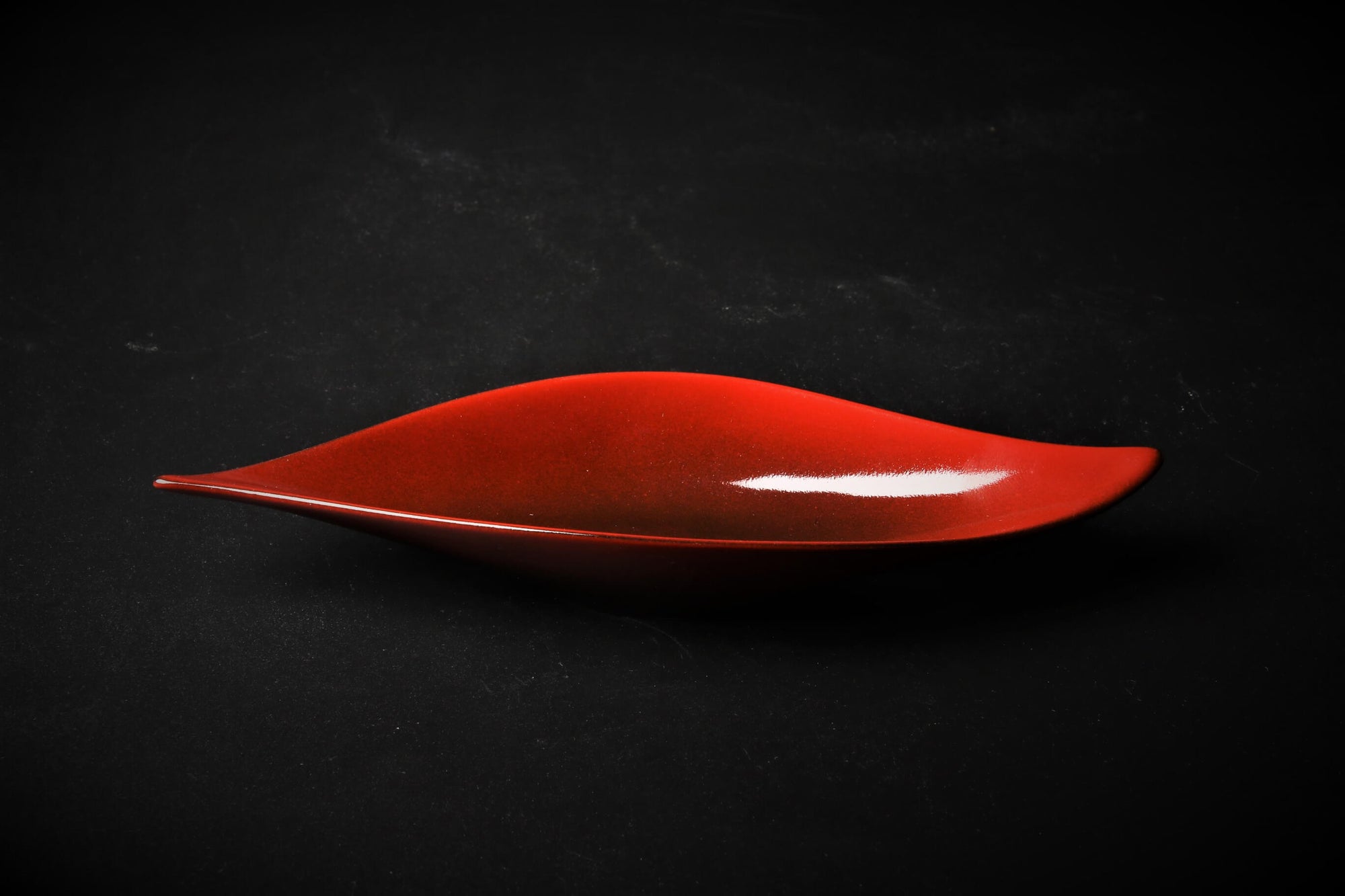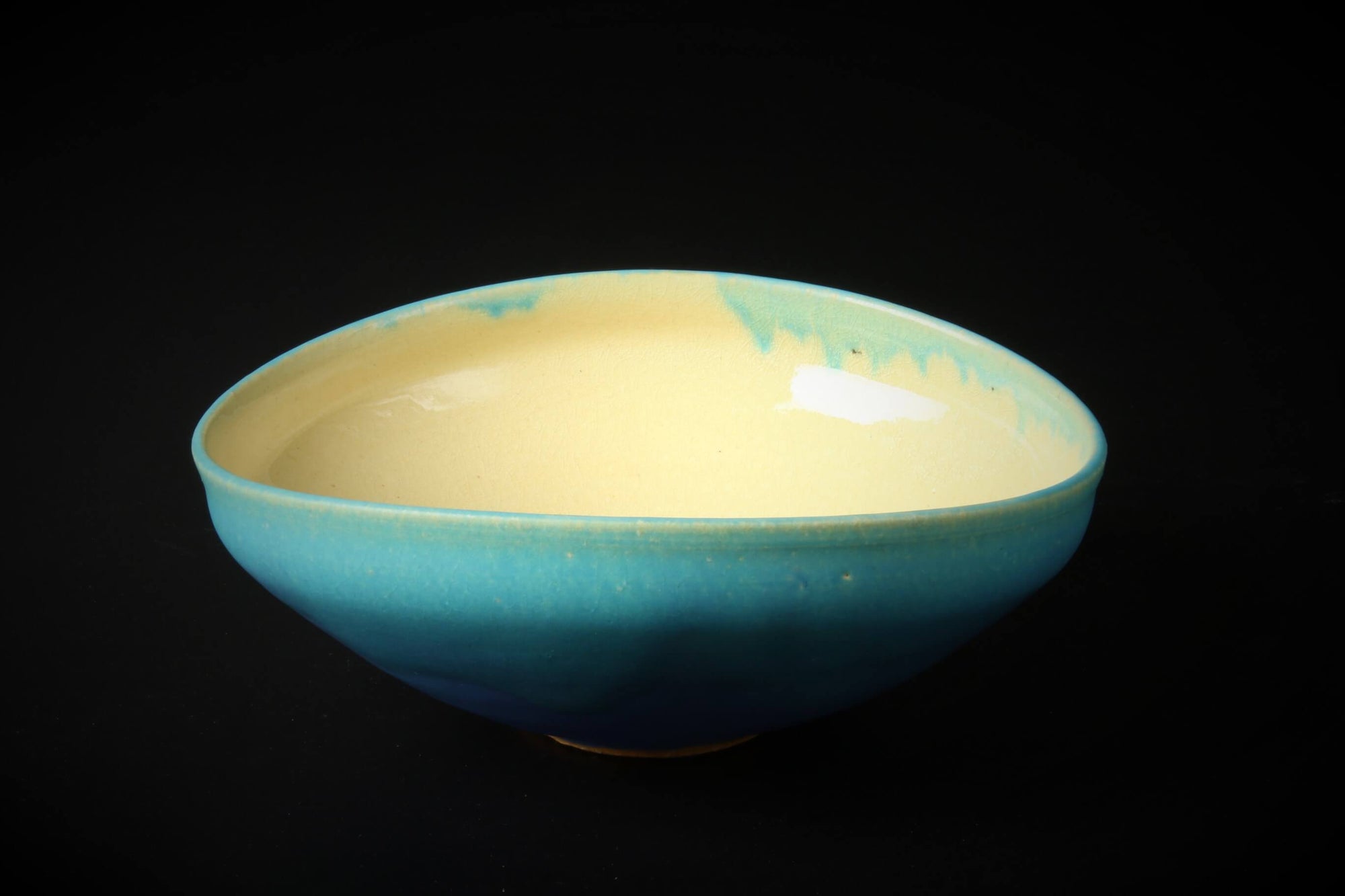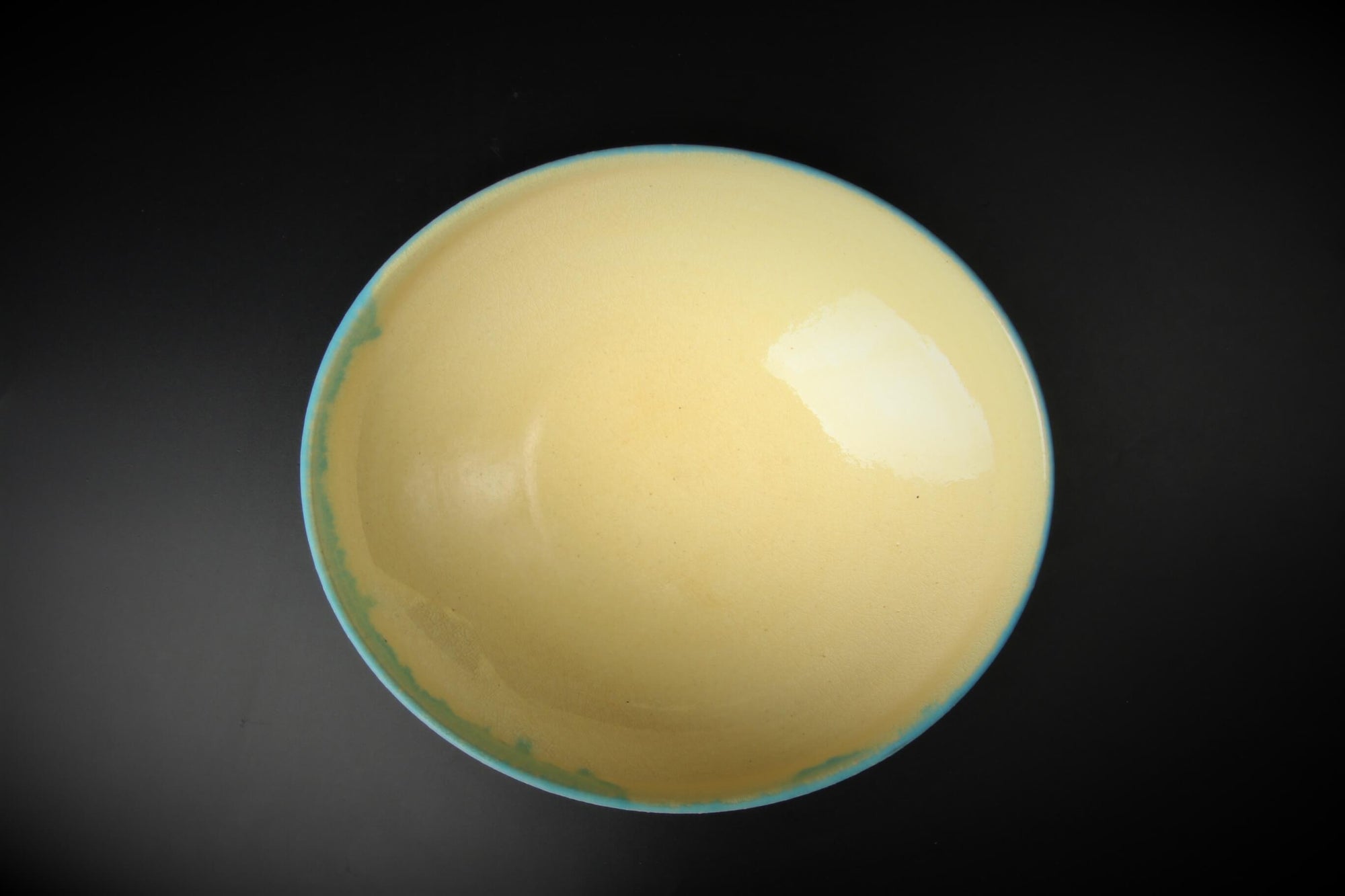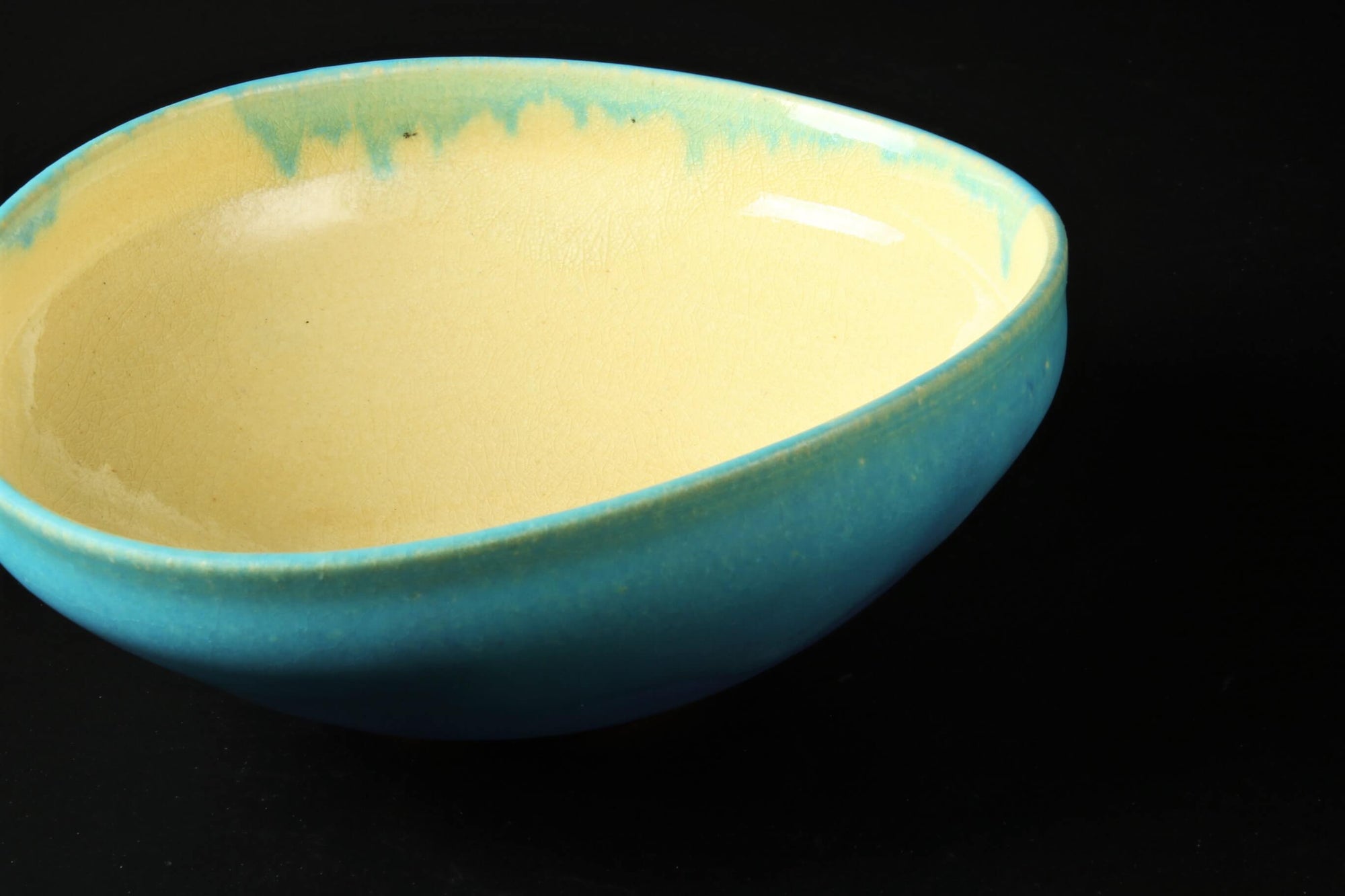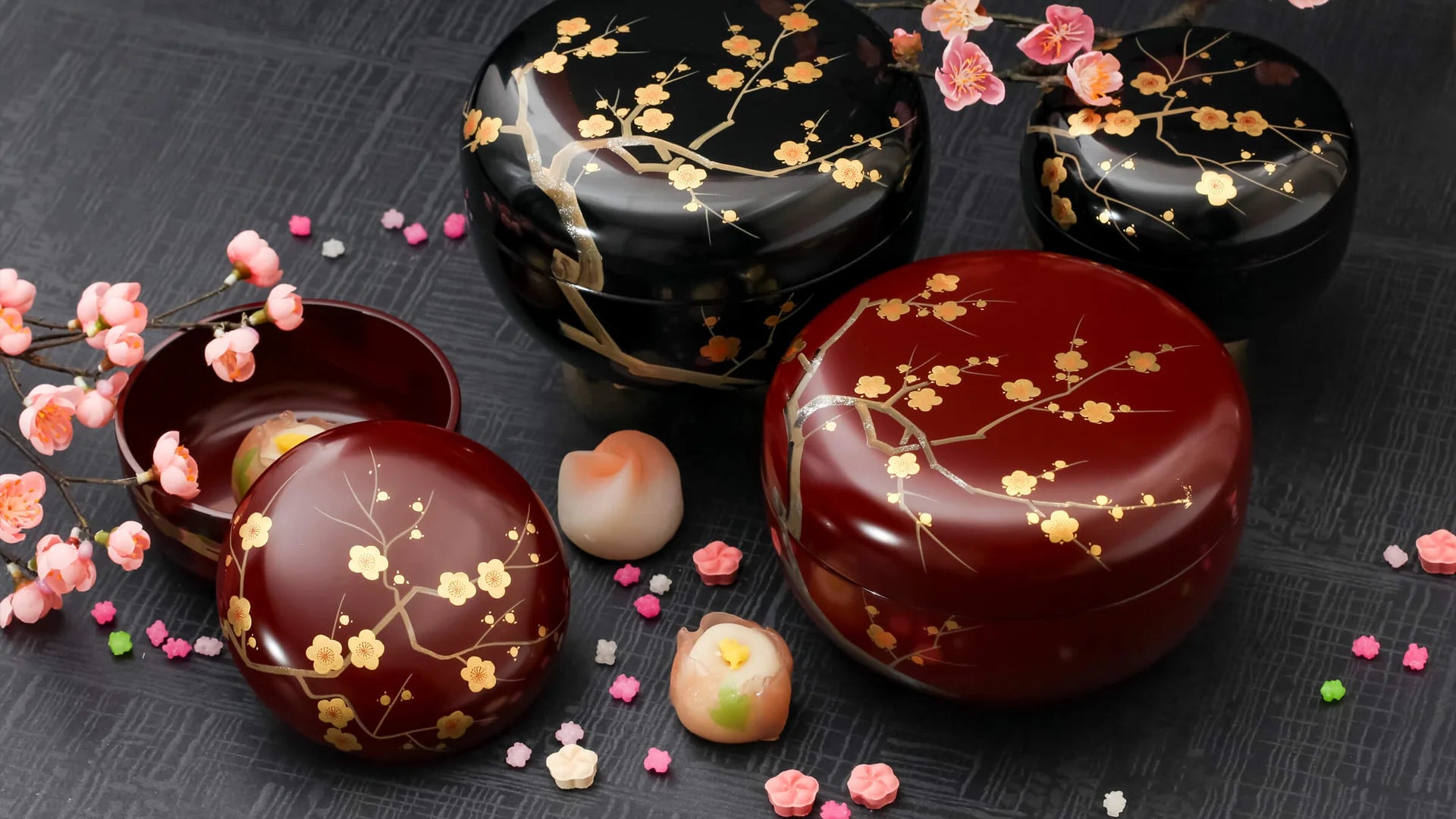
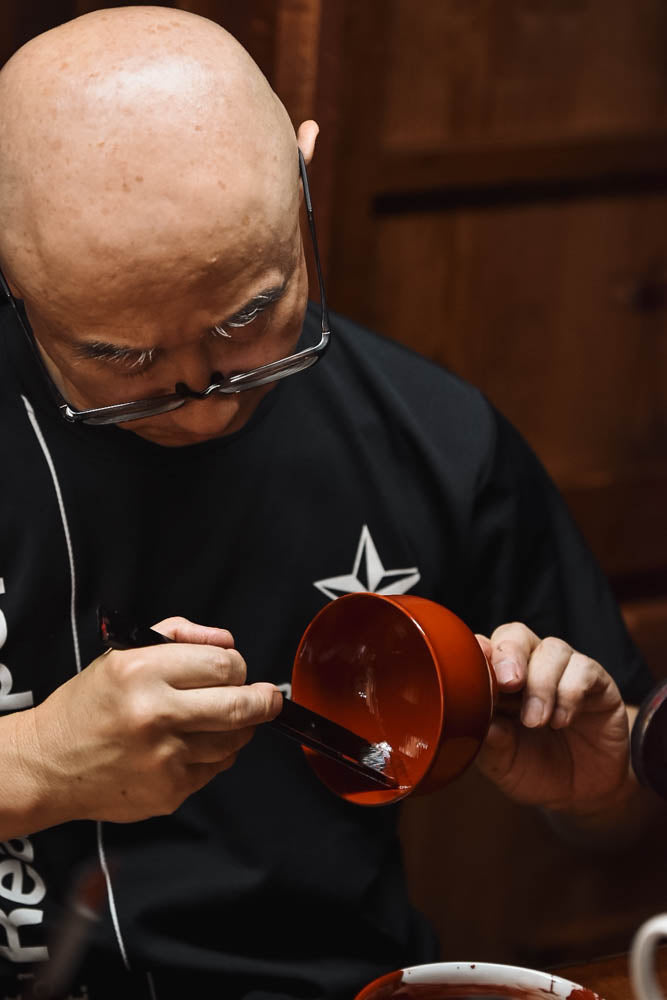
Welcome to Kyomi Insider, Your window into the heart of Japanese craftsmanship!
Explore the profound world of Japanese Artisanry through exclusive videos, interviews, and articles. Join us on this immersive journey celebrating the mastery of artisans.
Kyomi Project's media team was granted an exclusive opportunity by Yamada Heiando Lacquerware to delve into the inner sanctum of master artisans in the birthplace of Echizen lacquerware, the town of Sabae. Join us on a captivating journey as we share with you insights gained from our unique conversations with these craftsmen in their sacred workshops.
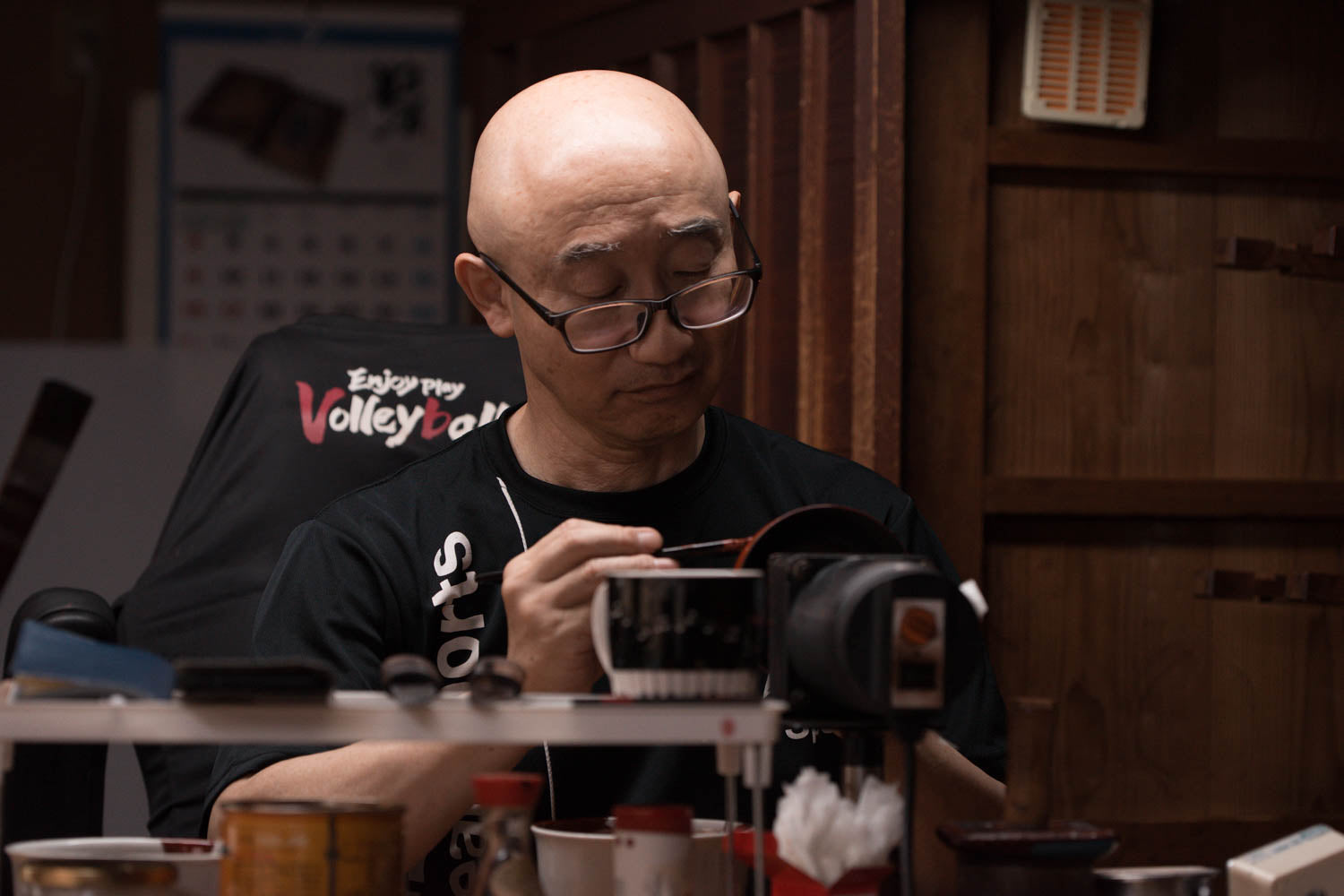
An Interview with Shinya Hatakenaka, master craftsman in Echizen lacquerware painting
When I think back on our encounter with Shinya Hatakenaka, the first thing I remember is how much of a natural teacher he was.
Faced with a team of young foreigners armed with eager cameras and minimal knowledge of Japanese, Mr. Hatakenaka guided us around the entire two-storied workshop and did his best to explain every minute detail of the production process. Human hair brushes, revolving wooden contraptions, and tins of red powder were brought out for us to study, the purpose and etymology of each piece carefully brought to light. It was a bit like observing the insides of a living museum, each tool and material a narrator of a rich, cultural tapestry.
With his down-to-earth generosity, it’s almost possible to forget that he’s a second-generation master artisan, handcrafting lacquerware products for distinguished patrons, including Japan’s royal family. However, this wasn’t always the case. After graduating high school, Mr. Hatakenaka worked in a different company for 20 years while his younger brother was the main craftsman in the team. It was only after the latter got married and started his own business that Mr Hatakenaka returned to continue his father’s artisanal legacy, himself an award-winning master in the field. After 8 years of craftsman training, he is now in charge of middle-layer lacquer coating — of adding that first layer of vivid color to each hand-carved bowl, thereby infusing life into a painstaking team effort. As the main spokesperson for the team, Mr Hatakenaka is now renowned for the consistent quality of the round bowls he paints.
When speaking to the craftsmen, I noticed that they often stressed the importance of quality control in differentiating artisans and artists. In the realm of traditional Japanese crafts, the artisan’s work is ultimately an act of labor, and the ability to dedicate yourself to consistent perfection is often prized beyond ‘spur-of-the-moment genius’. Yet, when questioned about his work philosophy, Mr. Hatakenaka reconciles the two in his discovery of the “artisan’s spark”. It was during another cycle of this endless painting and polishing, he explains, that he “suddenly felt like he was doing something very well”. It was a fleeting moment, but that spark formed the basis of his future artistic vision. “With the repetitiveness of the job, it’s a precious moment all artisans should feel,” he said. He described it as the intangible motivation to improve and try new techniques, paradoxically borne from the repetition needed to attain technical perfection. As a gateway to discovering one’s artistic style, the spark creates space for innovation and personal style to flourish, especially vital in a deeply traditional industry. “I learned from my dad. I learned his style, the way he paints,” he said. “But I did it a bit differently.”
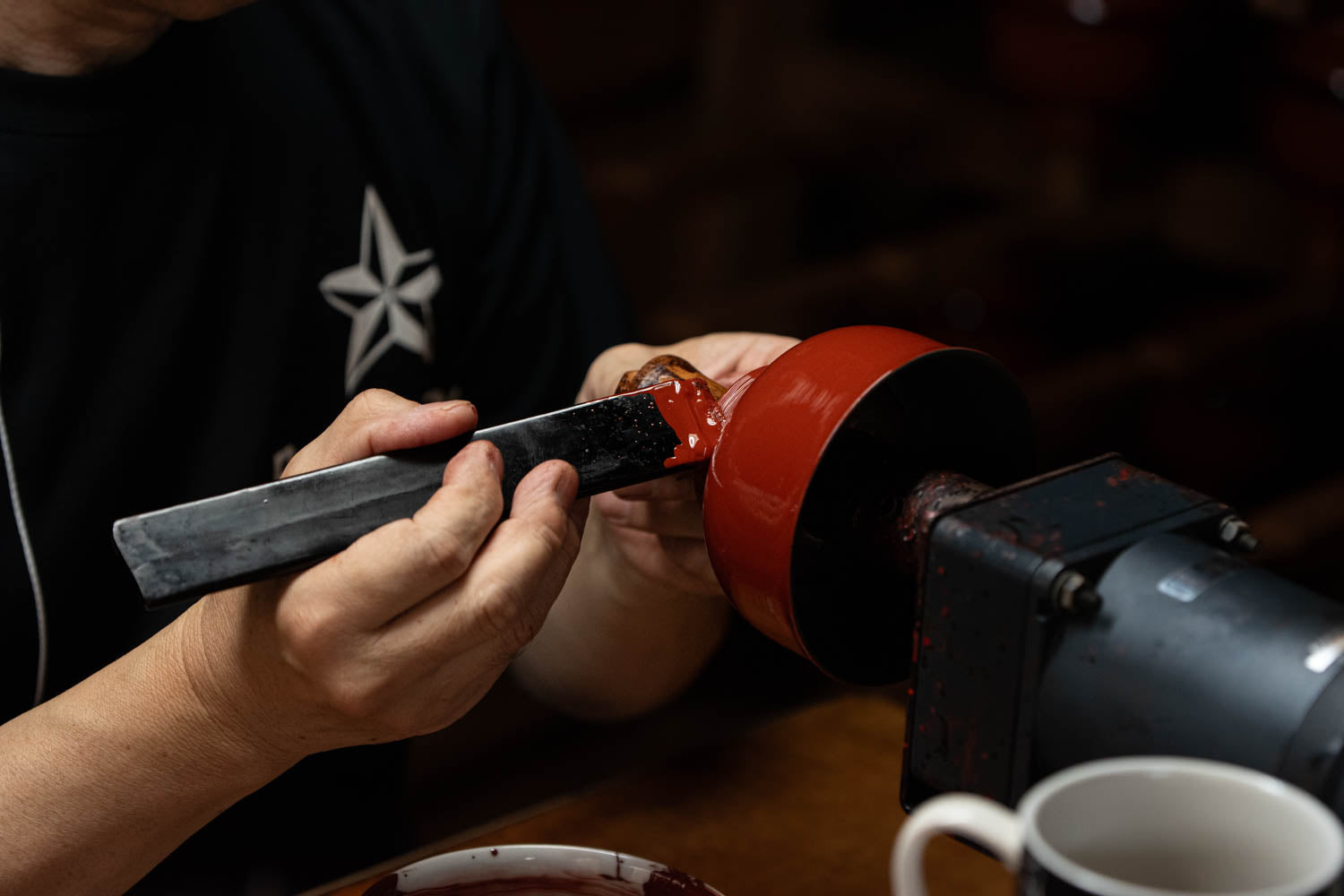
As we delved into the heritage of his work, his narrative was echoed by monochrome photographs framed along the room. The legacy of Echizen lacquerware is long and lustrous, and the responsibility that comes with continuing it is something Mr Hatakenaka is keenly aware of. “My father’s time was called the ‘high growth economy’ or the ‘bubble economy’,” he reflected. “In that time, if you could paint, you could make money. Now we’re not living in that era, not even the tiniest speck of dust can be found in the bowl.” In other words, today’s market not only appreciates but demands absolute perfection. Quality control, he stressed, is critical. “I want to create something reminiscent of ancient times, and I hope my skills can live up to the name of Echizen lacquerware.” That’s why every single detail in the painting process matters — from the ratio of oxidized powder to Urushi lacquer used in the paint, to the texture and shape of each brush, to the rotating machine used to dry the paint out evenly. Although the lacquerware was never made with global popularity in mind, he finds deep joy in customers’ assurance in his skill and expertise, regardless of whether this comes from local or foreign patrons.
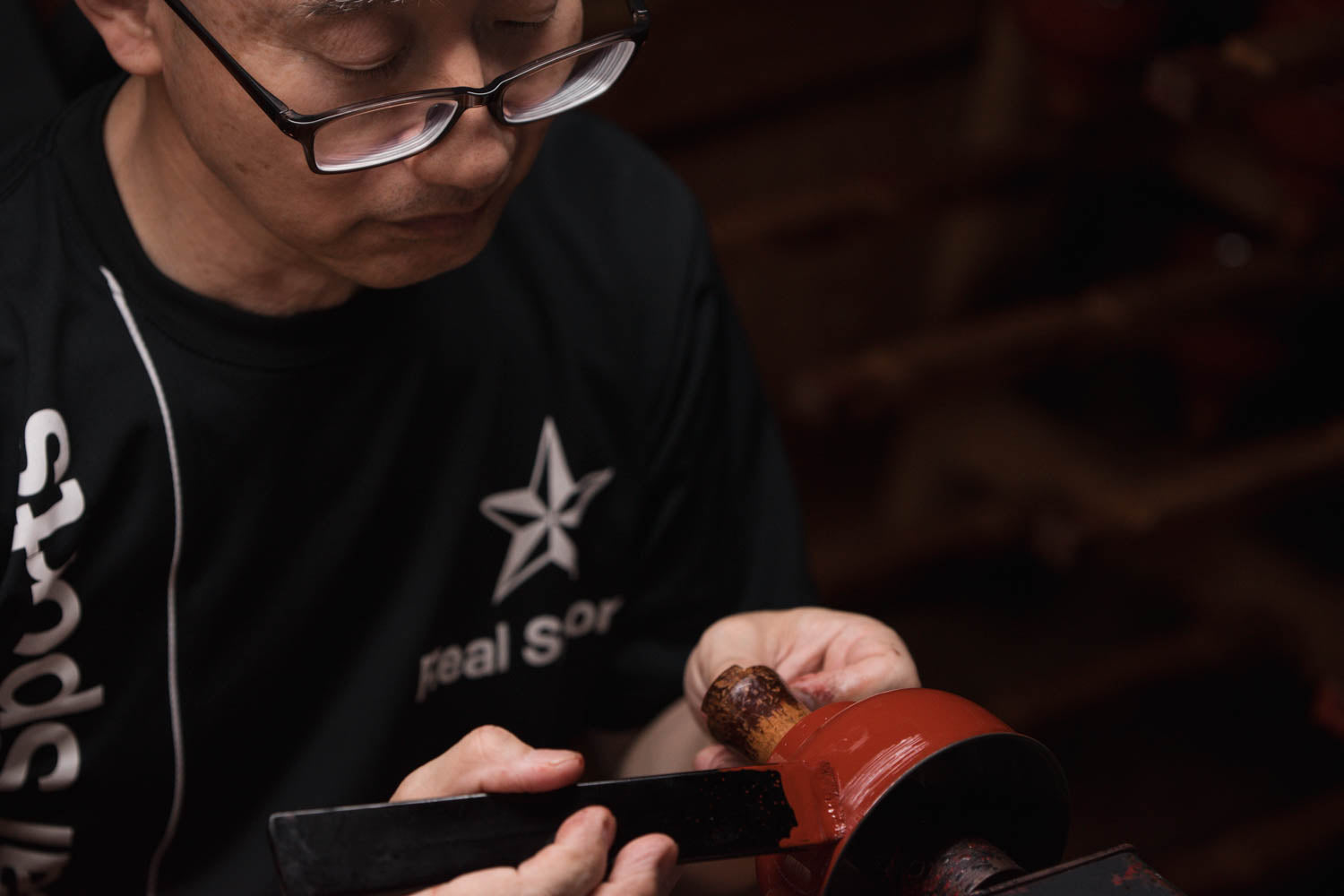
In light of the declining traditional crafts scene,their work stands as a beacon of perseverance and adaptation. “There aren’t many craftsmen, and this industry is going out of business,” he laments. “That’s why we put in a lot of effort for Echizen lacquerware.” As a mentor to younger artisans, he decided that it was no longer effective for students to passively observe him at work. He now guides them with a more hands-on learning approach, encouraging them to repeat the process till they create their own style. After all, much of the art is unique to its creator; the base coating of each bowl differs depending on the artisan doing it, and the shape of the brush is personalized to the craftsman’s preferences. At the end of the day, this human touch is what makes traditional craftsmanship irreplaceable. In the face of evolving technology and consumer manufacturing, Mr. Hatanekata believes that every category of crafts will have its place in the world, be it trendy manufactured goods or classical crafts. “Everyone is just trying to survive in their own way. Every category has its strengths and market,” he said. “And there will always be a need for this traditional style.”
As we stepped out of the workshop, we concluded a journey into the soul of a culture, carrying with us a renewed appreciation for the enduring spirit of traditional craftsmanship. As a small tribute to his life’s work, Kyomi pays homage to Mr. Hatakenaka’s role as custodian of a timeless art form, inviting you to support the world of Japanese crafts and preserve the flames of a rich artistic legacy.
Featured product
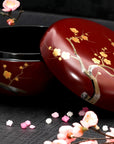
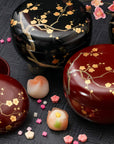
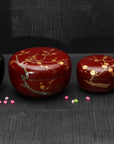
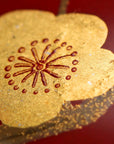
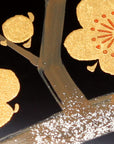
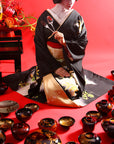
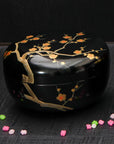
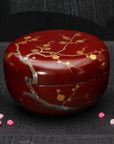
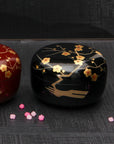
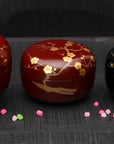
This YAMADA HEIANDO "Ume" Dome Box is a luxurious addition to any interior. Enjoy the playful and alluring hues of the classic round, symmetrical ume roses - available in both red and black, small and large sizes. Tradition has it that the Japanese have cherished these roses for centuries, immortalizing them with beautiful artwork and colors.
Don't worry even if it is your first time to use lacquerware - We send a compact handling manual with each item. Written inside are our fundamental philosophy, the basic history of lacquerware, and notes on using them in daily life.
These beautiful items are the perfect choice for your next gift, satisfying everything you could ask for in gift-giving. We wrap all items with our original wrapping paper, ribbons, and bags (We do not charge extra for wrapping. It is free.
This content type will accept rich text to help with adding styles and links to additional pages or content. Use this to add supplementary information to help your buyers.
You can use product metafields to assign content to this tab that is unique to an individual product. Use tabs to highlight unique features, sizing information, or other sales information.
An Insider into Sabae: the Lacquerware Town
Nestled along Japan’s Western coast, Sabae is a jewel on the Takumi Road, a historic trail in the Hokuriku region that celebrates Japan's most esteemed craftsmen. Here lies a sanctuary of winding roads, blue-tiled roofs, and rice fields soaked in summer, where generations of artisans have silently honed the art of Echizen lacquerware. When Kyomi ventured here to listen to the craftsmen, we found ourselves enveloped in the world of Echizen lacquerware, welcomed with much warmth into a town rich with cultural heritage.
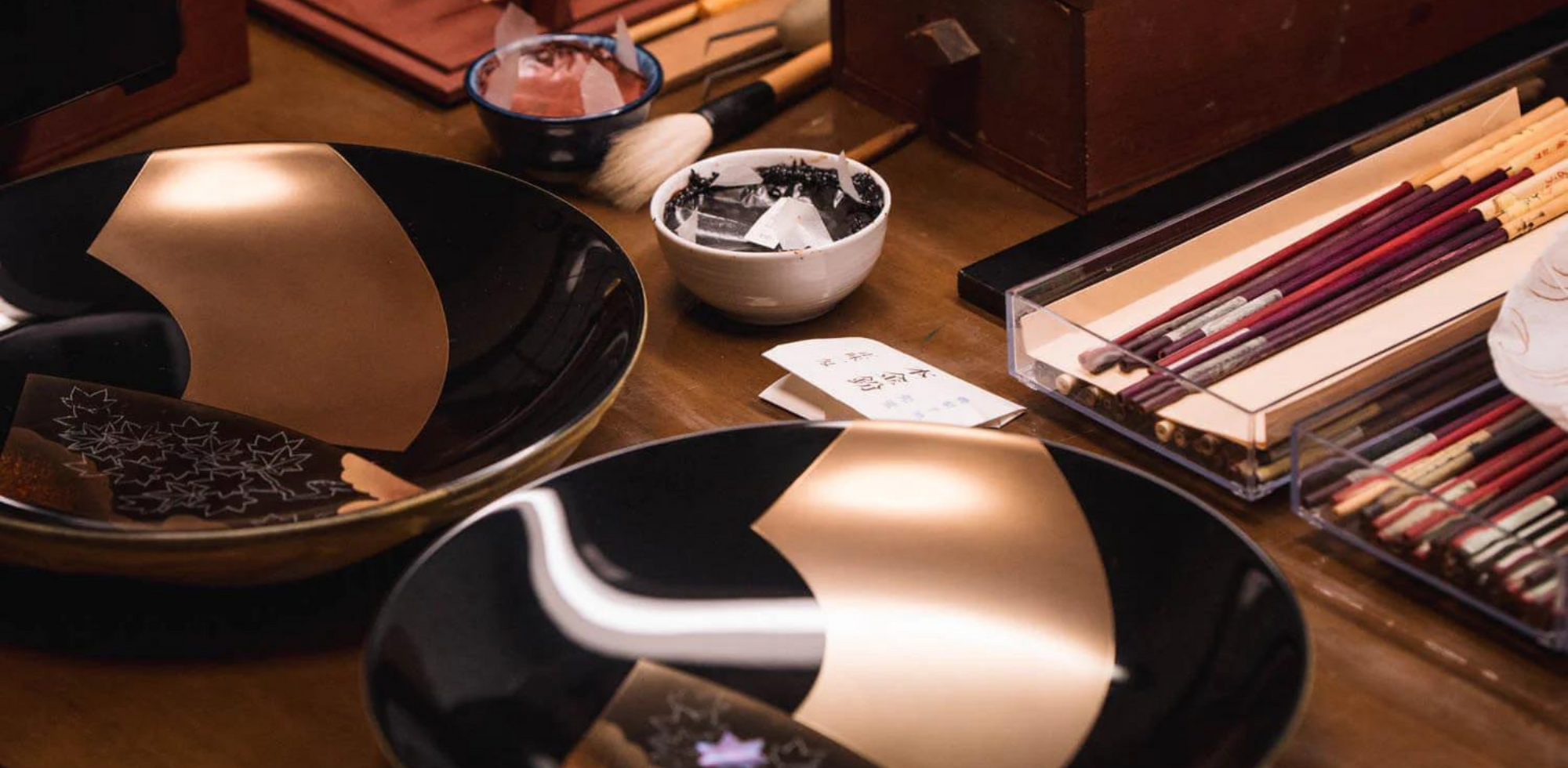
Explore More:
GET IN TOUCH
For inquiries, assistance, or customization options, please reach out to our dedicated customer support team at:
Email: contact@kyomiproject.com
Address: 2-2-2 Marunouchi, Marunouchi Mitsui Building 3F, Chiyoda-ku, Tokyo, Japan 100-0005
Explore more on our Kyomi homepage.

